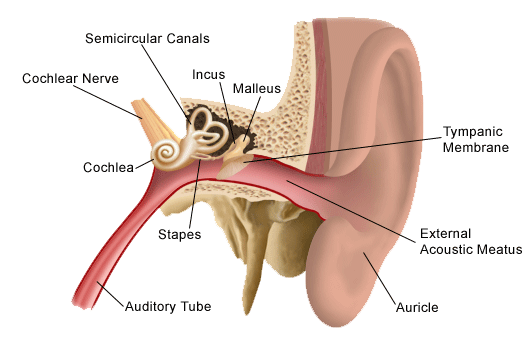The nurse is auscultating a client's chest for breath sounds. In which situation should the nurse expect to auscultate increased breath sounds?
When bronchial breath sounds are auscultated in the trachea.
When the client is experiencing excessive sneezing from a tree pollen allergy.
When the client is resting in bed and not experiencing respiratory issues.
When the bronchial tree is is obstructed by secretions.
The Correct Answer is D
A. When bronchial breath sounds are auscultated in the trachea.
Auscultating bronchial breath sounds in the trachea is a normal finding, as the trachea is close to the upper airway, and this is where bronchial sounds are normally heard. However, if these sounds are heard in the peripheral lung fields, it can indicate an abnormal condition.
B. When the client is experiencing excessive sneezing from a tree pollen allergy.
Excessive sneezing due to allergies would not typically result in increased breath sounds. Allergies may cause nasal congestion, but they don't directly lead to increased breath sounds.
C. When the client is resting in bed and not experiencing respiratory issues.
If a client is at rest and not experiencing any respiratory issues, breath sounds should typically be normal. There would be no reason to expect increased breath sounds in this scenario.
D. When the bronchial tree is obstructed by secretions.
Increased breath sounds, such as wheezing or rhonchi, can be auscultated when there is an obstruction in the bronchial tree due to secretions, narrowing of the airways, or other causes. These sounds are typically abnormal and indicate an issue with air movement through the airways.
Nursing Test Bank
Naxlex Comprehensive Predictor Exams
Related Questions
Correct Answer is A
Explanation
A. Auricle (Pinna):
The auricle, also known as the pinna, is the visible external part of the ear. It consists of movable cartilage and skin. When administering eardrops, pulling the auricle up and back helps to straighten the ear canal, allowing the drops to enter the ear effectively.
B. Mastoid Process:
The mastoid process is a bony prominence located behind the ear. It is not a part of the outer ear structure involved in administering eardrops.
C. Outer Meatus:
The outer meatus, also known as the external acoustic meatus or ear canal, is the tube-like structure leading from the auricle to the eardrum. It is the passage through which eardrops are administered. Pulling the auricle up and back helps to straighten the outer meatus for the proper administration of eardrops.
D. Concha:
The concha refers to the bowl-shaped depression next to the ear canal. While it is a part of the outer ear, pulling the concha is not a technique used for administering eardrops. The auricle, specifically, is manipulated to facilitate the process.

Correct Answer is A
Explanation
A. Wheezes:
Wheezes are continuous, high-pitched, whistling lung sounds that are heard especially during expiration and sometimes during inspiration. They are caused by the rapid movement of air through narrowed or constricted airways, which is common in conditions like asthma. Wheezing is a characteristic adventitious sound associated with asthma and other obstructive respiratory disorders.
B. Whispered Pectoriloquy:
Whispered Pectoriloquy is an increased loudness of whispering noted during auscultation with a stethoscope on the lung fields. This phenomenon occurs when sound is transmitted clearly through consolidated or compressed lung tissue, making whispered sounds more distinct. It is a sign of lung consolidation, often seen in conditions like pneumonia.
C. Bronchial Sounds:
Bronchial sounds are harsh, high-pitched sounds heard over the trachea and the large bronchi. These sounds are normally heard during expiration. If they are heard over peripheral lung areas, it can indicate consolidation or compression of lung tissue, possibly due to pneumonia or tumor.
D. Bronchophony:
Bronchophony is a phenomenon in which spoken sounds are heard more clearly and distinctly through the stethoscope on auscultation of the lungs. Normally, sounds are muffled during auscultation. Increased clarity of spoken sounds can indicate lung consolidation, similar to whispered pectoriloquy, and is often associated with conditions like pneumonia.
Whether you are a student looking to ace your exams or a practicing nurse seeking to enhance your expertise , our nursing education contents will empower you with the confidence and competence to make a difference in the lives of patients and become a respected leader in the healthcare field.
Visit Naxlex, invest in your future and unlock endless possibilities with our unparalleled nursing education contents today
Report Wrong Answer on the Current Question
Do you disagree with the answer? If yes, what is your expected answer? Explain.
Kindly be descriptive with the issue you are facing.
